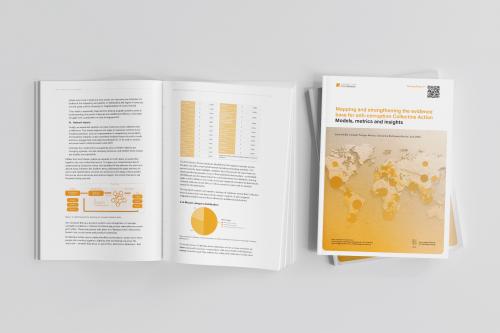Mind the gap: building a bridge between research and practice to better fight illegal wildlife trade

When you have a difficult problem to solve, it often helps to look at it from a different angle. And it always helps to collaborate with experts who have different perspectives and skillsets.
This is the simple premise behind my latest short report on Social network analysis in the fight against illegal wildlife trade. It draws on my experience as a social network analyst keen to apply this technique in support of law enforcement activities against organised crime, including wildlife trafficking.
Few of us would disagree that collaboration between researchers and practitioners is fundamental to increase our capacity as a community to fight crime in the contemporary world. Strategies to fight crime should be based on evidence, right? But while opportunities for such collaboration are plentiful, real-life examples are surprisingly challenging and all too rare.
This situation is no different with bridging the gap between researchers such as myself specialised in social network analysis (SNA) and investigators of wildlife trafficking offences. The first challenge is promoting wider understanding of what SNA is and what it can do. If you are one of those who aren’t sure, feel free to read my quick guide to social network analysis in combating organised crime and trafficking.
The second challenge is demonstrating just how much SNA research can support investigations relating to illegal wildlife trade or, for that matter, any form of trafficking or serious organised crime. Some of the specific benefits I explore in the report are:
- analysis of datasets to generate a wide range of valuable intelligence products;
- structuring the intelligence through SNA to enable its systematic application by investigators;
- identifying criminal actors previously hidden in the data;
- assessing vulnerabilities in criminal networks;
- developing evidence-based strategies to counter IWT.
The advantages go both ways. Law enforcement activities and practitioners can support SNA research on wildlife trafficking through:
- providing a rich source of primary and secondary data;
- helping to frame research questions and hypotheses;
- introducing researchers to the field and making connections;
- clarifying queries around specific data and the roles/functions of actors in the network;
- acting as a sounding board to confirm or reject the findings of the SNA.
In order to harness such synergies, we need to think of ways in which information can be better shared between the fields of research and practice. Transparency and access to enforcement information is a first step. Documents such as electronic wiretapping and shadowing records, or pre-trial detention orders and sentences, are incredibly valuable for SNA yet almost impossible for researchers to obtain. High-quality SNA needs high-quality data, so this challenge impacts the depth and breadth of findings that SNA can achieve. Weaker findings in turn make a weaker contribution to law enforcement efforts.
Do we want to create a virtuous circle between research and practice in support of our shared goal – that of fighting wildlife crime and taking down the criminal networks responsible? Of course. So let’s figure out how to build bridges over the gaps.
Bringing different fields of knowledge and skillsets together in a context of openness and collaboration will not only produce better knowledge, but also improve processes. Meaningful collaborations are planned from the outset and designed to share and build on capacities, perspectives and practices. In this way, our vision becomes sharper and our body of knowledge becomes greater than the sum of its parts.
Learn more
- My quick guide to social network analysis offers a brief introduction to SNA, its goals and techniques.
- I recently published a preliminary report on my initial findings: Examining wildlife trafficking networks in East Africa through the lens of social network analysis.
- For broader background, see the Basel Institute's Working Paper 30: Corruption and wildlife trafficking: exploring drivers, facilitators and networks behind illegal wildlife trade in East Africa, published in 2019 in collaboration with my colleagues Claudia Baez Camargo and Saba Kassa.
- See further information on the Basel Institute's IWT programme and the focus of the programme's research and social network analysis component.
Photo by Nikolai Ulltang from Pexels.




